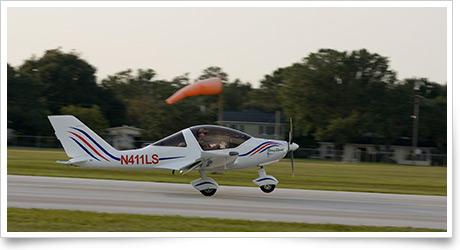Custom content for the Dec. 28, 2012, issue of 'AOPA ePilot' newsletter
| The following stories from the Dec. 28, 2012, edition of AOPA ePilot were provided to AOPA members who expressed an interest in the particular subject areas. Any AOPA member can receive information tailored to their areas of interest by updating their preferences online. |
training tips‘WS’ a turbulent TAF tidbit
No sense rushing out to the airport just yet. And, as you read the terminal aerodrome forecast (TAF), you note that it concludes with an unfamiliar section that begins with the letters WS, followed by wind data:
181800Z 1818/1918 08012KT 6SM -RA OVC010 FM181900 08014G21KT 3SM -RA OVC008 FM190600 07012KT 2SM -RA OVC003 FM190900 05010KT 2SM -RASN OVC003 FM191300 02010KT 1SM -SN OVC003 WS020/08040KT
Good thing you noticed that item! The passage contains an alert for expected wind shear, which is a hazard to any aircraft of any size. That’s why air traffic control actively solicits pilot reports about wind shear encounters.
To review: “Wind shear refers to winds in the same area blowing in different directions, or at different speeds, or both. This shear creates turbulence by creating rolling motions,” wrote Jack Williams in his Weather column, “A clearer view of invisible winds,” in the March 2011 Flight Training.
“The greater the difference in wind speed or in wind direction, the stronger the turbulence will be,” he added.
The Aeronautical Information Manual’s explanation of TAF elements describes how WS information is presented. You will find it in section (e), containing so-called optional data. “Wind shear is the forecast of nonconvective low level winds (up to 2,000 feet). The forecast includes the letters ‘WS’ followed by the height of the wind shear, the wind direction and wind speed at the indicated height and the ending letters ‘KT’ (knots). Height is given in hundreds of feet (AGL) up to and including 2,000 feet. Wind shear is encoded with the contraction ‘WS,’ followed by a three-digit height, slant character ‘/,’ and winds at the height indicated in the same format as surface winds. The wind shear element is omitted if not expected to occur,” it says.
If you noted that the alerts discuss “nonconvective” wind shear, remember that when convective activity is present or expected, it is always wise to be on guard for wind shear (or much better, on the ground). “Any time thunderstorms are forecast near an airport you should expect wind shear and turbulence,” advised Williams. training productsSporty’s offers its Study Buddy Test Prep to help get you ready for the FAA written test. It offers a free online version, a premium version that offers answers with explanations, and flashcards and apps on the iOS and Android platforms. Users can create customized study sessions, take randomly generated practice tests, and use learning mode to select specific aeronautical knowledge areas.
Note: Products listed have not been evaluated by ePilot editors unless otherwise noted. AOPA assumes no responsibility for products or services listed or for claims or actions by manufacturers or vendors. final examQuestion: If I observe some phenomena that I can’t explain while flying, to whom should I report it?
Answer: There are centers that collect and analyze data on unidentified flying objects (UFOs) and other unexplained in-flight phenomena. Two such centers are Bigelow Aerospace Advanced Space Studies (BAASS) and the National UFO Reporting Center. Any concern regarding life and/or property should be reported to local law enforcement.
Got a question for our technical services staff? Email [email protected] or call the Pilot Information Center, 800/872-2672. Don’t forget the online archive of “Final Exam” questions and answers, searchable by keyword or topic. |
 Checking out the terminal forecast as an early winter storm makes its way out of the region, you can tell that it will be a while before marginal visibility, low clouds, and showery precipitation make a complete exit.
Checking out the terminal forecast as an early winter storm makes its way out of the region, you can tell that it will be a while before marginal visibility, low clouds, and showery precipitation make a complete exit.

